The Longines Pilot Majetek Pioneer Edition, now in Titanium
Longines' vintage aviator/military watch now in a lightweight, instrument-like style.

Known for its countless (and often appealing) vintage re-editions, inspired by some glorious watches of the past, Longines last year relaunched an important historic pilot watch, the Czech Pilot watch known as “Majetek Vojenske Spravy” or more simply, the Pilot Majetek. A follow-up to a model of 2014, this re-introduction was done with style and boldness. It is now time for a limited edition made of titanium, with a more technical and monochromatic look, the Pilot Majetek Pioneer Edition.
The modern Pilot Majetek, just like the 2014 Longines Heritage 1935, is a modern interpretation of the Longines Czech Pilot watch developed in the 1920s and supplied to the Czechoslovakian Air Force in the 1930s. The watches were marked as Majetek Vojenske Spravy, meaning “property of military administration”, earning the Longines Majetek nickname among collectors. As Denis said in his previous article, “I believe Longines Vojenske would be a better name, translating into Longines Military and not Longines Property, but it is too late for that.” History made it the Longines Majetek. So be it.

The 1935 model produced by Longines to fill the order for the Czech military had a 40mm cushion-shaped stainless steel case, a black porcelain dial with big white Arabic numerals, and a fluted rotating bezel with an internal marker. Turning the bezel with the triangular marker and the crystal in unison, you can execute several simple but helpful timing functions. A big case was necessary to fit the pocketwatch calibre 15-94 and to operate it while wearing gloves. The watch was anti-magnetic, reliable and well-built to survive in a dangerous environment.
Like many modern reinterpretations of past models, Longines did not go for an entirely faithful reproduction and brought last year the steel Pilot Majetek, which was bolder, more technical, larger and overall more modern. That being said, it did bring an important element that was missing from the 2014 edition: the rotating bezel. This year, the collection has been extended with a special series in Grade 5 titanium, an alloy that is both lighter and stronger than steel.
This new Pioneer Edition most certainly benefits from the use of titanium, as we’re looking at a fairly big watch measuring 43mm in diameter, 13.30mm in height and a substantial length of 51.40mm. No need to say much, it is a bit pilot/military watch on the wrist, with a presence that’s reinforced by the cushion shape of the case. That being said, titanium is about 30% lighter than steel and it does participate in making this new Majetek Pioneer easier to wear. If you’re into oversized pilot’s watches, then you’ll be pleased. The case is mostly brushed, adding a darker grey colour to this watch and a more technical/instrument feel.
Faithful to the vintage watch, the Pilot Majetek is now back to its original construction with a fluted bidirectional bezel coupled to the internal luminescent mobile triangle marker, or Starting Time Indicator. The latter is positioned under the sapphire crystal, from which it is independent and above the dial. On the historic 1935 model, the bezel and the glass fitted with the marker rotated as a single unit. In this modern edition, the sapphire crystal is fixed and contributes to the water-resistance of the new case.
This Majetek Pioneer Edition retains elements from the steel version, such as the solid back secured by four screws, a screw-in crown with lateral guards and a very decent 100m water-resistance. The left side is home to an engraved “1935” commemorative plaque, housing the patented gear mechanism for the bezel coupled with the triangular marker.
To match the technical look of the titanium case, this new Pilot Majetek is fitted with a black grained dial, with raised hour markers and Arabic numerals coated in grey Super-LumiNova, with a bluish emission – compared to beige-toned SLN on the steel version. The hands, as well as the track for the small seconds, undergo the same treatment with a grey colour.
Inside the case is the calibre L893.6, an automatic movement developed specifically and exclusively to power the Longines Heritage collection watches by ETA. It is chronometer-certified by COSC. It operates at 25,200 vibrations/hour and has a power reserve of up to 72 hours, as well as antimagnetic properties with its silicon balance spring.
The final instrument-like touch comes from the strap. No more retro-styled brown or dark green distressed leather strap here, but instead a black technical fabric strap closed by a titanium buckle. It comes in a special Heritage box in the same colour.
Availability & Price
The Longines Pilot Majetek Pioneer Edition is released in a limited run of 1,935 watches, which are now available from the brand and its retailers. It is priced at EUR 5,300, USD 5,000 or CHF 4,550. I know that times have changed, that the watch now has a better COSC movement, is made of titanium and is more complex, but the 2014 edition was priced below 1.5k euros…
For more details, please visit longines.com.

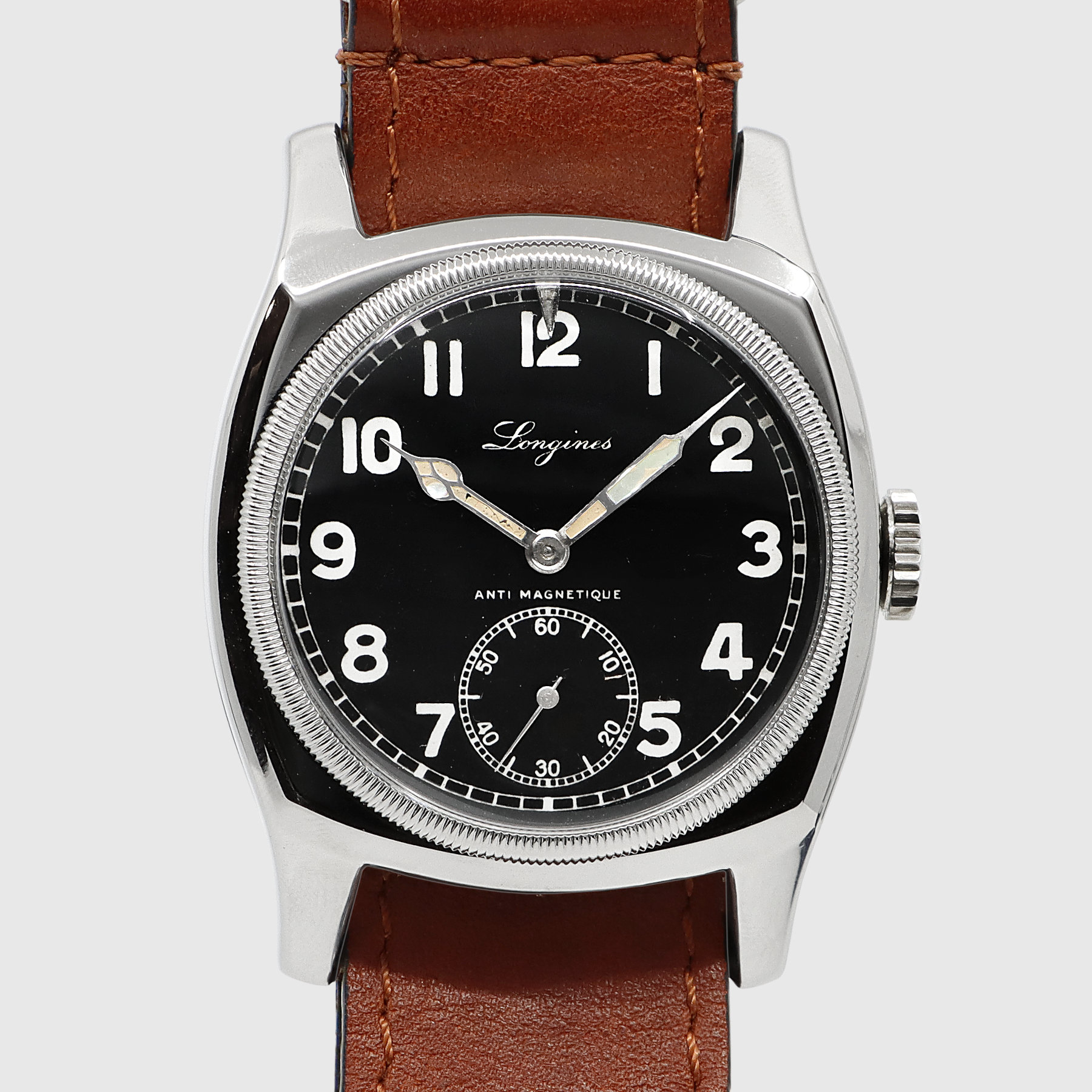
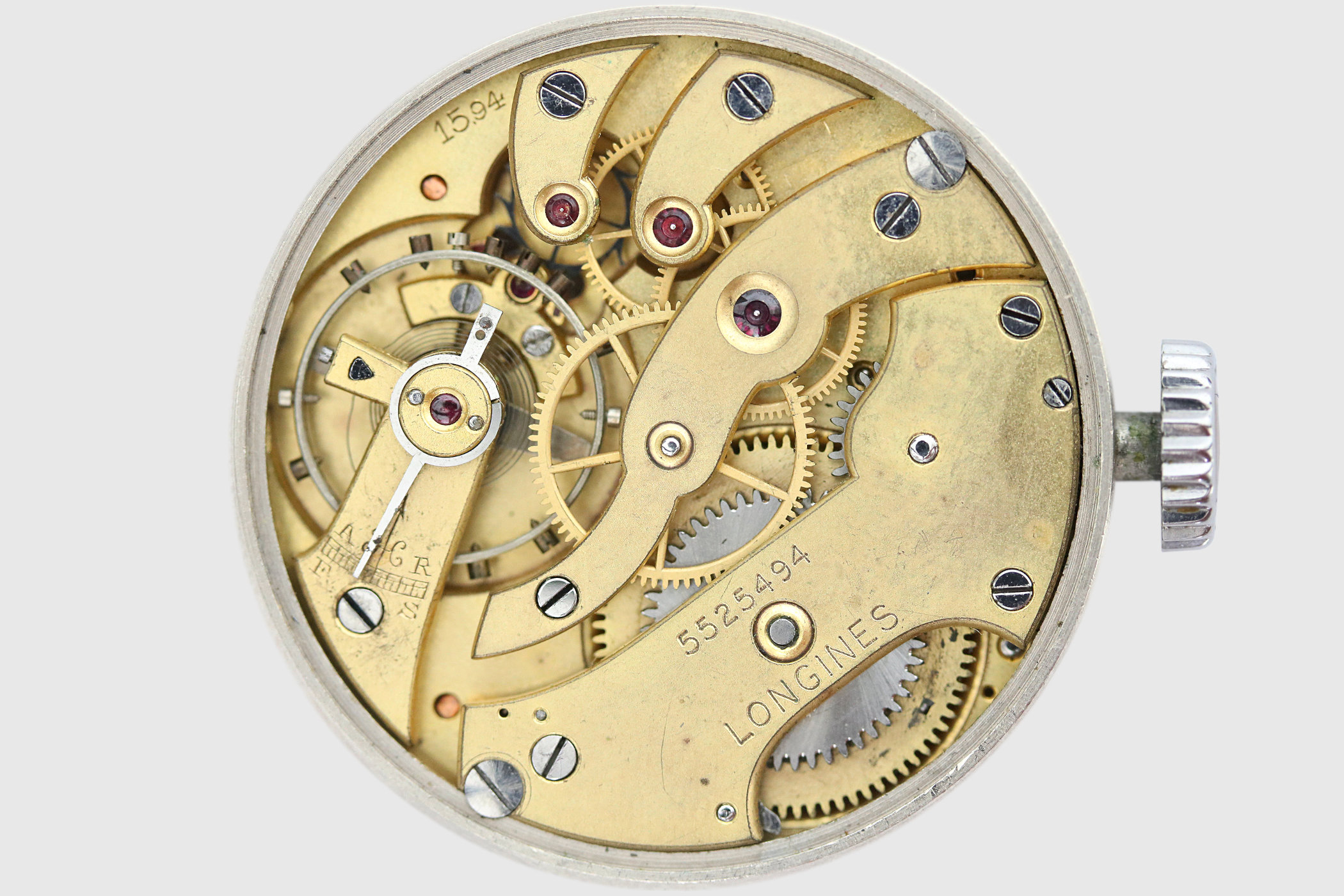
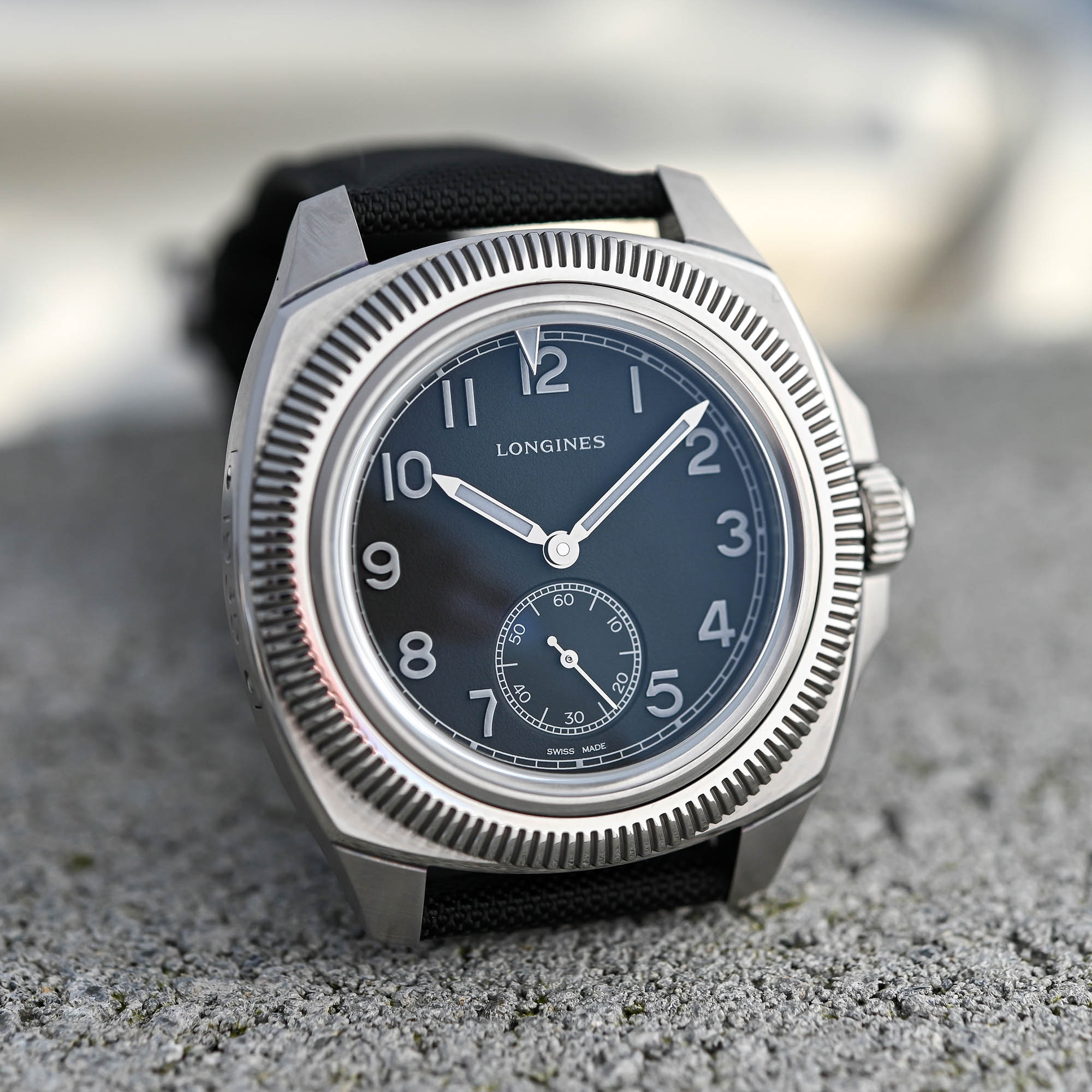
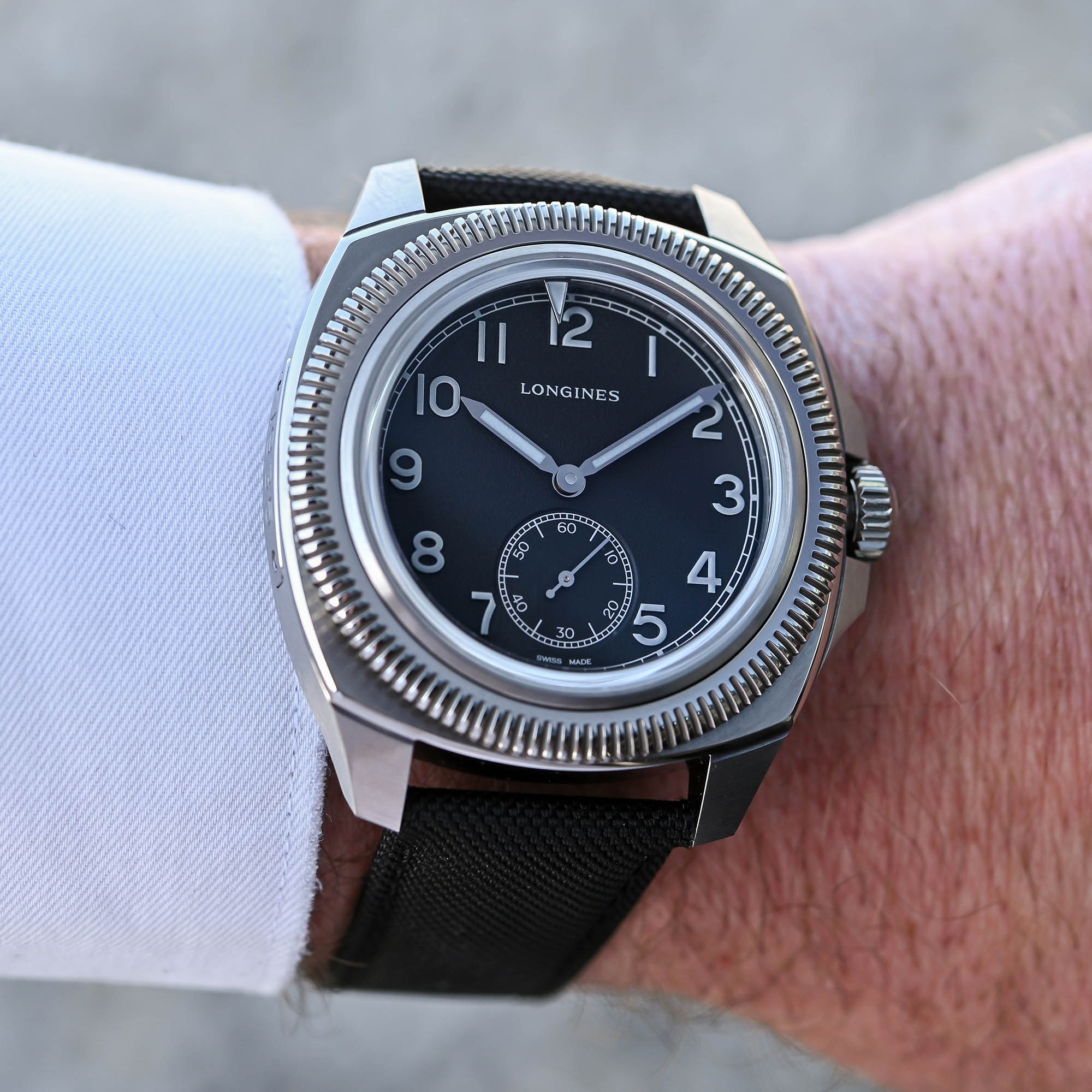

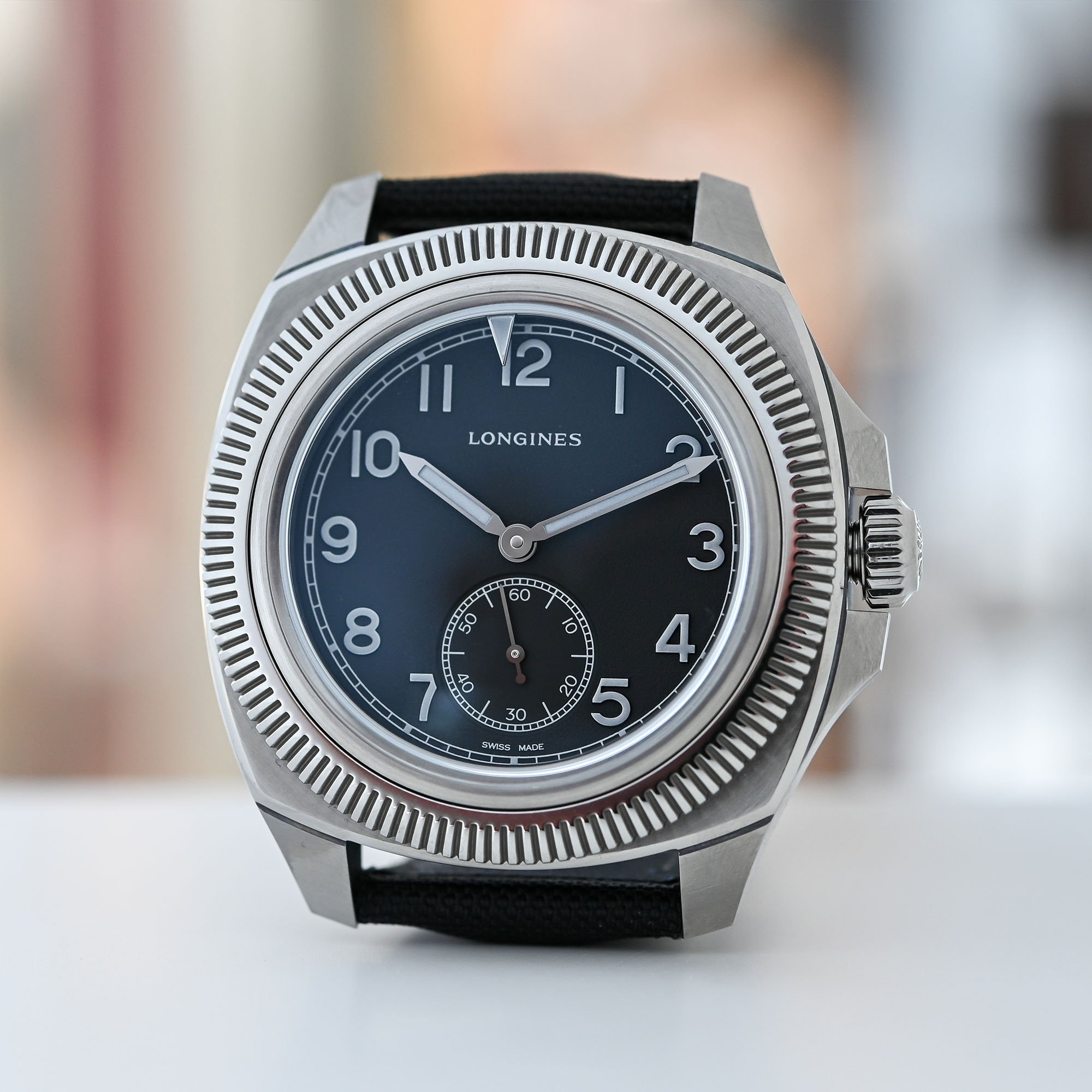








5 responses
Longines is now pricing themselves into chucklehead land! The watch is an interesting inclusion into their heritage collection, but their pricing, especially in comparison to the steel clad version, drops the ball and makes this version obsolete during its introduction! Again, another example of how to screw up what could have been something worthwhile.
Longines will never be panerai or omega and playing and those territories does not help either i will never buy a longines with eta movt at a price of an omega in the same time i will never buy a peugeot at a price of a porsche
Clunky, poorly proportioned (compared to the original) and over-priced. This is the watch version of a badly re-made Hollywood classic movie. It allows the makers to cash in, saves having to employ original thought and exploits a ready-made market. So disappointing.
Longines have been doing some great things recently, but this is not one of them. Too big and very much too expensive. Zero attraction to this monstrosity.
But, why so big? I’ve heard for a long time now that the trend is shifting towards smaller sizes, but have not seen any indication of such myself, aside from perhaps Tudor. And the original of this piece was not a behemoth either. Please get that trend rolling already!